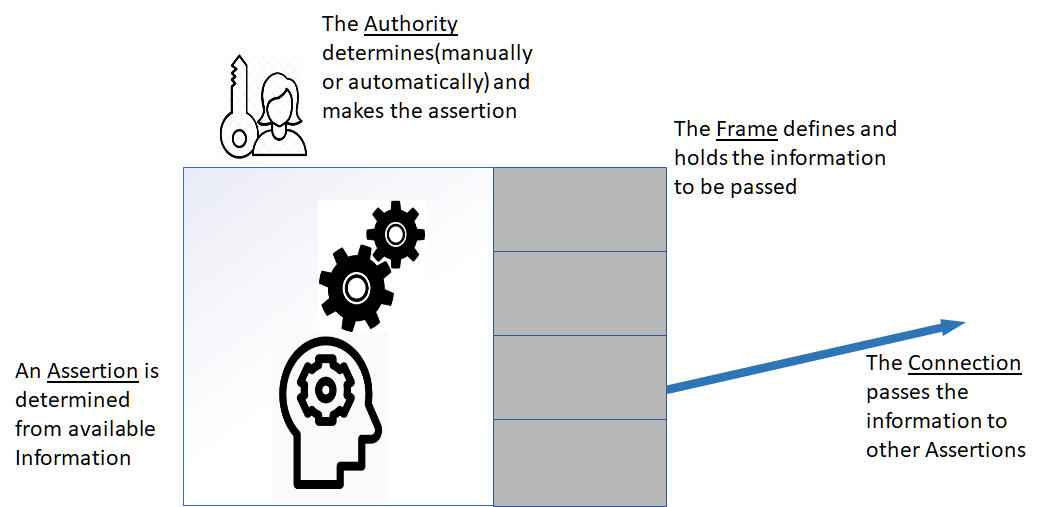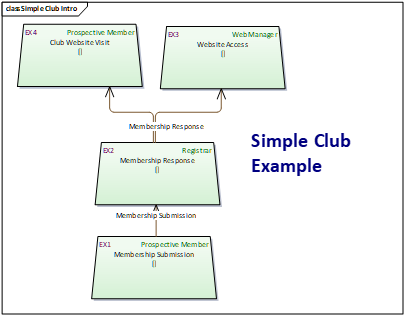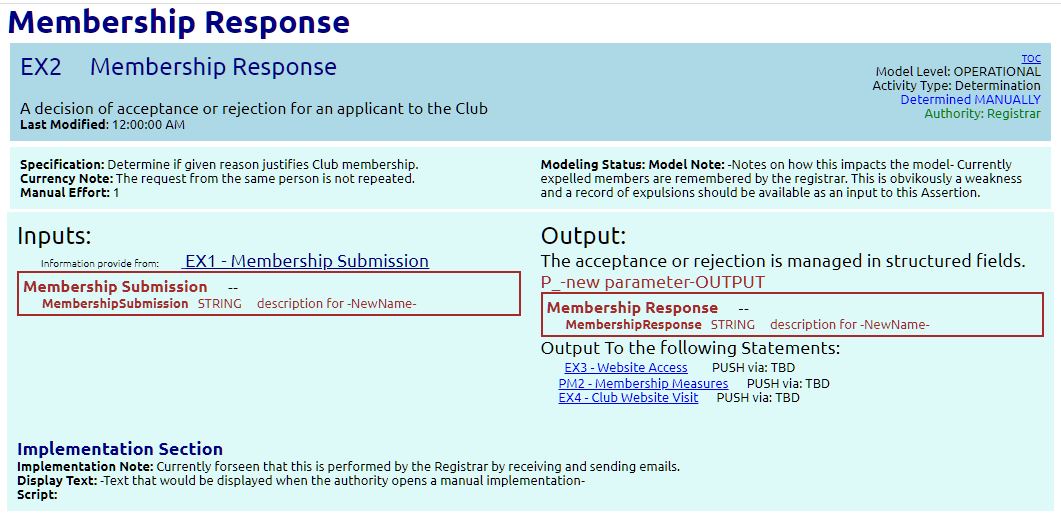Businesses are constantly challenged to explain what they do to outsiders. The practitioners know, it and, apart for some classic texts and a few written procedures, they pass this knowledge by word of mouth. So making systems that automate this knowledge in some way is a painful challenge.
Assertion Modeling distills business into its core elements: who makes a decision, how they express it, and to whom they send it.
Assertion Modeling is a language because it has a syntax and semantics. And as a language it lets you describe and document business accurately and completely. It focuses on the information and its meaning.
Assertion Modeling is a method because it has defined steps to capture the description. And the method is formal enough to build software to support it. And formal enough to generate a simulator/prototype of an application that might implement it.
If you take an Assertion Modeling approach, you dramatically narrow the gap between describing the business and producing a prototype and requirements.
The language in which we express our ideas has a strong influence on our thought processes.
— Donald Knuth
Assertion Modeling is a way to describe a business using the statements made, who makes them, the information they transmit, and to whom.
An Assertion Model is a network of the important statements, called Assertions, showing where the information is passed to inform the determinations of other Assertions.
Once built the model can be analyzed from a number of aligned perspectives to give insight rarely delivered in individual methodologies.
And with a simple structure which includes who, the structure of the information passed, and where the information is needed, implementation is simplified.
What makes up an Assertion
An Assertions is the information needed by the Authority, the guidance for issuing the resulting information and the format and meaning of the information issued.

Assertion Modeling is building a description of part of a business with all of its interactions by clearly articulating who is initiating the information, its meaning, how it is determined and who it is sent to.
An Assertion Model is a network of Assertions, Each Assertion is a statement made by someone who is authorized to make it(The Authority). The statement itself is standard packet with a clear business meaning unique to that Assertion. When an Authority makes the assertion they set the values in the packet. To determine those values they use information packets from other Assertions. Each information flow is a Connection, an agreed way of passing the packet.
Assertion Modeling offers a single consistent base to to capture a business domain, analyze it, and report revealing perspectives.
What does the model look like ?
As a diagram an Assertion Model shows the the assertions and who makes them as boxes. and the information flows as arrows. This example shows 4 Assertions with Membership Response at the centre. Membership Response is the information created and passed. The registrar receives the Membership Submission and uses that information (guided by specifications; in this case club policy) to decide on acceptance or rejection. The Membership Response contains the information on the status of the membership, information necessary for the Website manager to setup the new member and for the new member to logon.

If we drill down, the AM contains more detailed information about how the Assertion is determined. It identifies and categorizes the Assertion, details how it is determined and how often. It shows the information arriving to support the decision and the structure of the information created. All this information is suitable for the Assertion to be implemented as a manual or automated determination.

Once specified, the AM can be abstracted and viewed from many traditional perspectives such as user stories, process flows, RACI charts and stakeholder diagrams, to name a few.
Browse the example model for a Recruitment Function to see a full model and the power of its perspectives.
